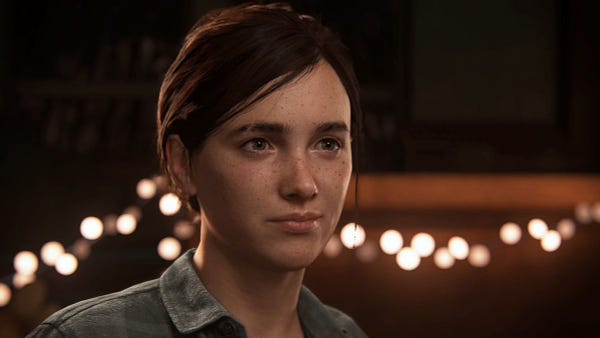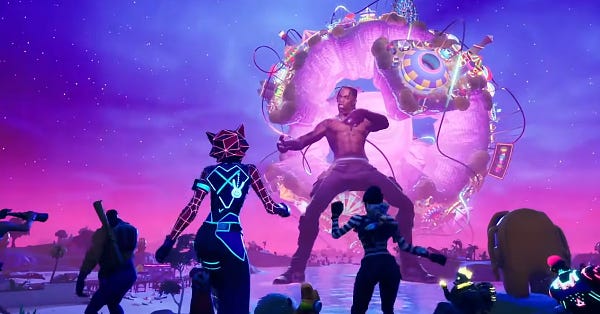Top 10 articles on games in 2020 as written by top investors, columnists, and journalists in the biz
Here are my picks of 2020's best gaming articles as appeared on WaPo, NYT, Bloomberg, FT, VentureBeat, PolyGon, a16z, GamesIndustry.biz, and others.
Hi Kalelanders,
Hope 2021 is off to a great start.
Last year was big for video games journalism. The Washington Post’s new video game section Launcher now has had its first full year under its belt. WIRED launched its gaming vertical. Jason Schreier moved from Kotaku to Bloomberg. Netflix released its video game docu-series High Score. Scores of new gaming-dedicated newsletters have flooded the market, as gaming-dedicated funds were springing up one after another across the globe.
As such, there was so much to read last year. And I personally was enormously inspired by many of the writers out there covering this sector. They were the reason why I wanted to get up in the morning and get to work.
In fact, I’d love to share far more than are technically allowed by an email. But for the sake of brevity, I’ll highlight one piece by each of the writers. The following articles take many different forms, some are opinion pieces while others are news stories, analyses, or even just personal musings. This list will also be organized chronologically so that it can serve as a bit of a walk down the memory lane recapping the many industry milestones and important launches last year.
Putting this list together got me thinking about what I want to accomplish for my interactive media coverage for the new year. The past three years on this beat have been quite a journey. In my first year covering games in 2018, I spent most of my time reporting on the biggest trends at the time. In 2019, I dove deep into all the technical and design aspects of the products themselves. And last year, I felt like I could finally stay abreast of the most cutting-edge conversations in the industry.
That said, the list below comprises ten articles that I’ve personally found most memorable in 2020.
Matthew Ball @Epyllion Industries — 7 Reasons Why Video Gaming Will Take Over (Jan 4)


Published before the pandemic when user spendings in games were actually on a cyclical downswing, Ball’s article was perhaps a prescient curtain-raiser for a nightmarish year partially relieved by the biggest video gaming boom in history. His article has summarized the many ways in which the gaming sector is reaching an inflection point. Obviously, the pandemic has accelerated the many trends he had identified in this essay.
To borrow Dr. Joost van Dreunen’s words, games have evolved from a product-based model to a service and now increasingly behaving like media. Ball’s analysis treats gaming as a form of media, and, by comparing it to video, many of interactive media’s strengths have crystallized through Ball’s analysis.
Jon Lai @a16z — The Promise of Cloud-Native Games (Jan 14)

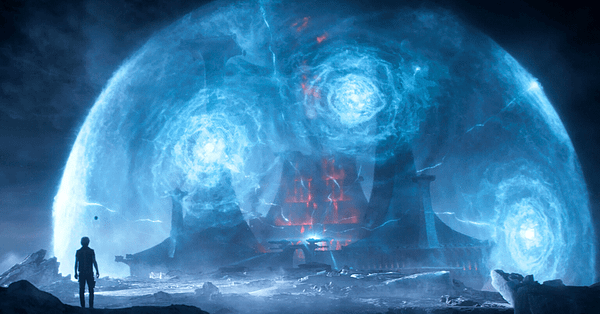
Cloud gaming is perhaps the biggest buzzword in gaming these days, and rightfully so. Matthew Kanterman from Bloomberg Intelligence said that he thinks PS5 and Xbox Series X may be the last generation of consoles because he believes cloud gaming may gradually take over (and help us end our decades-long addiction over all the much trumped-up console wars).
I have my own reservations about this take but I do see the merits. But it’s fair to say that sometimes the hype around cloud gaming as portrayed in general news coverage is misplaced because many writers lack an adequate understanding of just the heaps of challenges facing this technology.
But Lai’s piece on cloud-native games offers an informative preview of how cloud gaming can actually come about. To truly usher in the era of cloud gaming, cloud-native games will have to come through first. The cloud’s impact on gaming will also be much larger than it had on video. While Netflix has fundamentally changed what kinds of shows and movies get made and even how they are made, TV shows and movies today aren’t too different from those from 10 years ago. But cloud-native games may look nothing like the video games of today.
Lai also likes to compare games to social media platforms, with regards to which he said:
“Collectively, these cloud-enabled features accelerate the network effects inherent in multiplayer games. If successful, the first CMMO could flourish entirely through player-led recruitment, with a viral growth curve that more closely resembles that of Facebook than a traditional MMO.”
Gene Park @WaPo — Silicon Valley is racing to build the next version of the Internet. Fortnite might get there first (April 17)

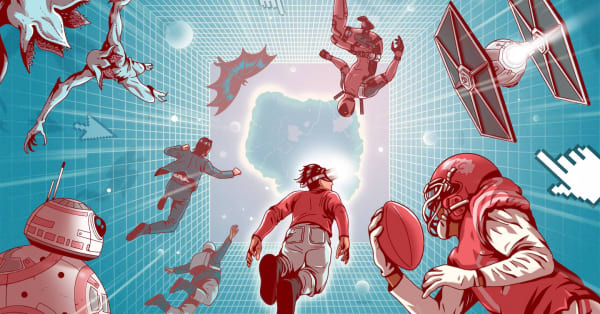
The truth is Ball and Lai are probably the bigger Metaverse evangelists on this list than Park ever is. Balls and Lai are both venture capitalists obsessed over the massive growth potential that the Metaverse entails. But here I choose to highlight Park’s story on the Metaverse because it serves as a friendlier primer on this high-sounding concept born out of science fiction.
Park’s piece does a great job pulling quotes from Tim Sweeney, Matthew Ball, and the like. Talks of the Metaverse will only rise in number from this point on. But this story is the first piece I’ve seen in mainstream press focusing specifically on it.
Jason Schreier @BBG — Ubisoft Family Accused of Mishandling Sexual Misconduct Claims (July 21)

Schreier’s move from Kotaku to Bloomberg was in and of itself huge news for video games journalism. Nobody does labor and corporate culture stories on the gaming industry better than Schreier. His coverage on Ubisoft was big in 2020.
Schreier’s inside look into Ubisoft not only made me feel infuriated about the company’s culture, but it has also raised a lot of what-ifs in my head, especially when I learned how many of the female characters in the Assassin’s Creed games went from being protagonists to bench-warmers, simply because management believed that female lead characters couldn’t sell. This story gives me a renewed appreciation for both female lead characters in games as well as female gamers themselves who have seen their preferences neglected for years.
Elise Favis @WaPo — ‘The Last of Us Part II’ handles Ellie’s coming out story with care. It reminded me of my own (July 22)

(Spoiler alert)
Favis’ piece moved me to tears. The Last of Us Part II was my favorite game of the year, and I strangely see so much of myself in Ellie, a lesbian orphan girl living in a zombie-infested world with whom I have barely anything in common. I personally felt validated when I found out that TLOU2 was crowned as the game of the year by most critics.
Favis’ piece sheds light on why Ellie’s coming-out moment was an emotional cornerstone of the overall story, the beating heart -- often shrouded in self-denial -- that pulls together all these disparate parts of what appears to be a hate-filled revenge tale until the final minutes. From the very beginning, Ellie’s sexuality is the elephant in the room that propels players’ interest to see the story forward. Yet it is never fully addressed until the very end, after laying waste to everything in the name of vengeance has overtaken as the main tenor of the story.
But the magical touch with which director Neil Druckman masterly shifts the story’s message back from hate to love in the final act lies exactly in how the flashback of Ellie’s brief coming-out moment seems so disproportionate to all the damage wrought. It is exactly the disproportionality of it that mirrors the breadth and depth of Ellie’s love for Joel. It feels both simultaneously completely unimportant and everything that we’ve wished for. It simulates the psychological journey of rediscovering something fundamental that had been forgotten but, upon reinspection, that something has also come to feel, unexpectedly, so much smaller than remembered and we, as well, have evolved into so much more than we were before.
Khee Hoon Chan @PolyGon — Games need to return to black-and-white morality (Aug 3)
Immediately following the release of TLOU2, Khee Hoon did a piece reflecting on a growing trend in games as the number of titles peddling grey morality has mushroomed in recent years. Indeed, while many see this trend as a sign of vidya game going mainstream and growing out of its simple cowboys-versus-Indians, dichotomous outlook of the world, the truth is that settling for ambiguity and refusing to take sides can feel like a hackneyed, not to mention lazy, trope when liberally applied.
I still believe that video gaming has emerged as perhaps the best form to tell a complex, multifaceted story (tabletop role-playing games have also long thrived on reenacting stories with blurred moral lines), at many levels I do share Khee Hoon’s concern regarding how some developers may be incentivized to commoditize grey morality in pursuit of perceived sophistication.
Imad Khan @NYT — Like Old Hollywood Movies, Video Games Get a Polish for New Audiences (Aug 3)

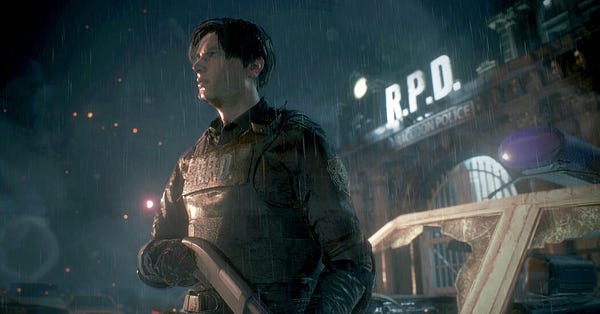
As a gamer, I have taken video game remakes for granted, the same as many cinephiles have been taking movie remakes for granted. But luckily Imad helps us take a step back and appreciate this phenomenon as yet another sign of the gaming industry growing up. Indeed, whenever a classic game is getting a remake, it almost feels like they are getting enshrined into a Hall of Fame. As a result, the sense of nostalgia felt by individuals then further cements into a sense of timelessness recognized by a community.
The budgets allocated for video game remakes also resemble those earmarked for movie remakes. The budget of Final Fantasy VII Remake was pegged to $140 million. It reflects investors’ and studios’ confidence in these projects. As a gamer, not only am I thrilled to play these games, I’m also excited because they feel like pilgrimages I can go on, adventures during which I can literally walk a mile in the shoes worn by the last generation of gamers.
Dean Takahashi @VB — The DeanBeat: Apple v. Epic — a briefing on the antitrust arguments and interesting facts (Sept 11)
The epic showdown between Apple and Epic has rocked the gaming industry. Between the many long threads on Twitter and the ranty blog posts penned by VCs, enthusiasts looking for more than the meat-and-potatoes coverage may be best served by following Takahashi’s reporting.
Takahashi’s sprawling chronicle here is a fascinating read written with both an almost play-by-play precision and a conversational style. When it comes to a high-octane business war as dramatic and nuanced as this one, I turn to the Dean for my information. The DeanBeat is quite simply a must-read for everybody in the game.
Rob Fahey — Microsoft won't try to buy industry dominance | Opinion (Sept 25)

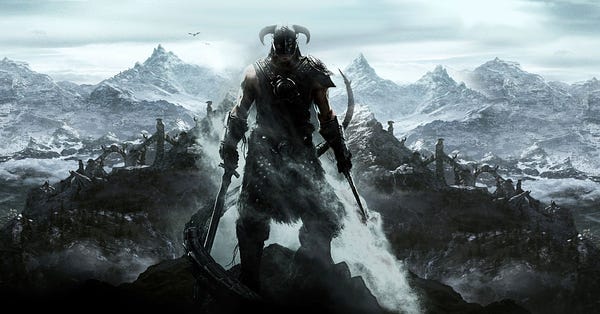
Rob is the most talented gaming columnist in the biz. I’ve made it a point to read all the articles he publishes. Reading him is like reading the Leader section of The Economist but on games. Put differently, while Rob does not have any special access to companies or products, nor does he ever dish out any earth-shattering hot take, his column is another must-read as his articles are always unfailingly eloquent and his ideas persuasive, even-keeled.
The piece above puts all of Rob’s strength as a game columnist on full display and then some. In this piece, the historian in Rob takes us back to a time when Microsoft first entered the gaming biz, coupled with his analysis on Microsoft with Nadella at the helm, to catch a glimpse into the giant’s future strategy with games.
Tom Faber @FT — Does cyberpunk’s vision of the future belong in the past? (Dec 9)


While Cyberpunk 2077’s launch fiasco had sucked up all the attention in the past two months, one important observation had largely flown under the radar. Faber’s unpacking of the Cyberpunk aesthetic is an excellent reminder of how the world is still holding onto its anxiety, fear, and attachment of techno-orientalism.
Indeed, a similar idea has been explored by George Yang’ story on WIRED — Orientalism, Cyberpunk 2077, and Yellow Peril in Science Fiction. But Faber’s story has made it presently relevant as he wrote, “This aesthetic is rooted in the perceived economic threat of Japan in the 1980s, yet critics question whether such vaguely Asian imagery should still be used as ominous window dressing today, after Covid-19 has sparked a new wave of real-world Sinophobia.”
Master the Meta — Genshin Impact: Deconstructing Mobile's Next Frontier (Dec 20)


This list wouldn’t be complete without the mention of Genshin Impact. However, sometimes this biggest dark horse of 2020 feels like it has been written to death over the past few months. Still, Master the Meta’s analysis stands out from the mix as it skillfully articulates how unique a product Genshin Impact is, i.e. the world’s first cross-platform, near triple AAA quality, persistent open-world game.
The article has also effectively identified a few trends as signaled by the success of Genshin which don’t usually make it to the English news coverage. For starters, Genshin proves the console-caliber experiences can be replicated on mobile. Then the game is also a wake-up call for the West that Chinese game developers are just as technically sound as the best in the West. Last but not least, like it or not, Genshin’s success is going to force more AAA games to make the switch to free-to-play. The train has left the station.
Thanks for reading! Catch y’all in the next one.




